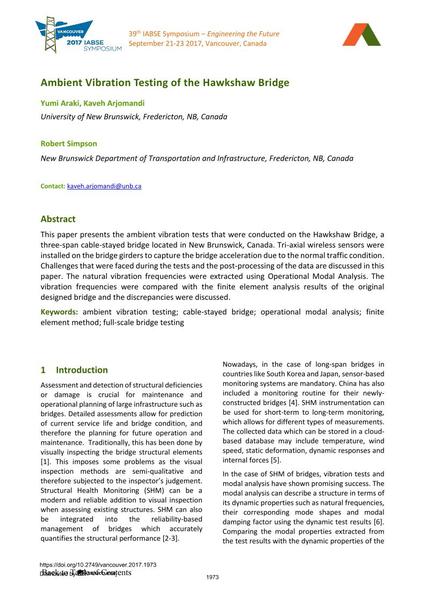Ambient Vibration Testing of the Hawkshaw Bridge

|
|
|||||||||||
Bibliografische Angaben
| Autor(en): |
Yumi Araki
(University of New Brunswick, Fredericton, NB, Canada)
Kaveh Arjomandi (University of New Brunswick, Fredericton, NB, Canada) Robert Simpson (New Brunswick Department of Transportation and Infrastructure, Fredericton, NB, Canada) |
||||
|---|---|---|---|---|---|
| Medium: | Tagungsbeitrag | ||||
| Sprache(n): | Englisch | ||||
| Tagung: | IABSE Symposium: Engineering the Future, Vancouver, Canada, 21-23 September 2017 | ||||
| Veröffentlicht in: | IABSE Symposium Vancouver 2017 | ||||
|
|||||
| Seite(n): | 1973-1980 | ||||
| Anzahl der Seiten (im PDF): | 8 | ||||
| Jahr: | 2017 | ||||
| DOI: | 10.2749/vancouver.2017.1973 | ||||
| Abstrakt: |
This paper presents the ambient vibration tests that were conducted on the Hawkshaw Bridge, a three-span cable-stayed bridge located in New Brunswick, Canada. Tri-axial wireless sensors were installed on the bridge girders to capture the bridge acceleration due to the normal traffic condition. Challenges that were faced during the tests and the post-processing of the data are discussed in this paper. The natural vibration frequencies were extracted using Operational Modal Analysis. The vibration frequencies were compared with the finite element analysis results of the original designed bridge and the discrepancies were discussed. |
||||
| Stichwörter: |
Schrägseilbrücke Finite-Elemente-Methode (FEM) FEM
|
||||
